[Update, 12/9/2014: As I got a big kick out of posting this recipe, and the one that followed for turkey koftas, I’ve decided to make Indian home cooking a regular part of this blog. In fact, next week (starting December 15) will be Indian home cooking week with recipes every day for everything from breads and pickles to dals, vegetable dishes, fish and chicken.]

Rajma with Rancho Gordo San Franciscano Beans
If it weren’t bad enough that this whisky blog now features weekly restaurant reviews here’s my first foray into cooking posts. Soon I’ll expand to regular reports featuring my vegetable garden (I’ll have updated pictures of the foot of snow it’ll be under for the next five months); parenting advice (Salo or the 120 Days of Sodom is not a family film); and my crucial fashion insights (the Nehru jacket is coming back!). It’s going to be so much fun!
Anyway, I’ve been an annoying food person for much longer than I’ve been an annoying whisky person. I’ve been discussing food online far longer than I’ve been discussing whisky (before the rise of food blogs, back when food forum wars were a serious thing—I was part of the second eGullet purge; “eGullet what?”, you say; exactly.) I’m also a prolific cook—other than a meal or two out on the weekend all our meals are home-cooked, and as my wife has a much longer commute than I do most of it is cooked by me. I have a pretty wide repertoire cuisine-wise but let’s face it nobody wants anything but Indian recipes from an Indian. And so here is yet another axis along which I can inflict myself on the world (though my old food forum friends will see this only as a return).
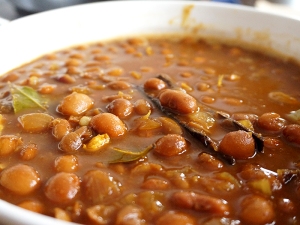 I posted a picture of this dish, made using Ojo de Cabra/Goat’s Eye/Eye of the Goat beans from my friend Steve Sando’s company Rancho Gordo, on Twitter and Facebook a couple of days ago and a number of his far more numerous followers asked for a recipe. This is a classic north Indian style preparation of red beans or rajma (the word “rajma” in India is used usually to refer to kidney beans but the usage is not very exact—beans of various shapes and shades of red get called rajma). Kidney beans themselves are not native to South Asia (they probably arrived with the Portuguese) but are now grown and cooked all over north India and beyond.
I posted a picture of this dish, made using Ojo de Cabra/Goat’s Eye/Eye of the Goat beans from my friend Steve Sando’s company Rancho Gordo, on Twitter and Facebook a couple of days ago and a number of his far more numerous followers asked for a recipe. This is a classic north Indian style preparation of red beans or rajma (the word “rajma” in India is used usually to refer to kidney beans but the usage is not very exact—beans of various shapes and shades of red get called rajma). Kidney beans themselves are not native to South Asia (they probably arrived with the Portuguese) but are now grown and cooked all over north India and beyond.
As you doubtless know, Indian food is intensely regional and various versions of this dish can be found across the north. This recipe is more or less in the Punjabi style, or at least in my mother’s take on the Punjabi style. We are Bengalis but as my father was in the Indian air force we lived all over India and my mother’s cooking hybridized unpredictably over the years. What this unquestionably is is home-style cooking. The type of Indian food that most people outside India are lamentably familiar with is a restaurant cuisine that seems largely based on cream and nut pastes. There is none of either in this dish.
A note on ingredients before we get to the recipe:
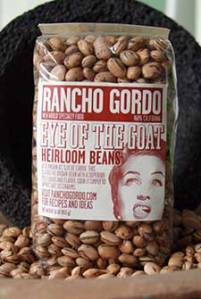 First the beans: I use Rancho Gordo beans almost exclusively for my bean cooking these days. This is because I want to support my friend Steve* (not that he needs my support—he’s got Thomas Keller and Paula Wolfert in his corner and by corner I mean his colossal bean empire) and because his beans are excellent—and the difference in quality makes a huge difference on the tongue. But any good dried beans will do. Good dried beans are beans that were not picked and packaged years and years before you picked them off a shelf. With old beans of that kind—which are mostly what are available from regular sources—cooking times will be much longer, the pot liquor will be indifferent and the skin of the beans may be tough. Rancho Gordo’s “heirloom” beans have none of those issues; if you have another source that’s fine too. I cannot guarantee results with this recipe with any other type of dried beans (if I were using beans from an Indian grocery I would pressure cook them)—this recipe relies on good beans to bring a lot of tasty pot liquor to the party. If you use canned beans I can only pray for you.
First the beans: I use Rancho Gordo beans almost exclusively for my bean cooking these days. This is because I want to support my friend Steve* (not that he needs my support—he’s got Thomas Keller and Paula Wolfert in his corner and by corner I mean his colossal bean empire) and because his beans are excellent—and the difference in quality makes a huge difference on the tongue. But any good dried beans will do. Good dried beans are beans that were not picked and packaged years and years before you picked them off a shelf. With old beans of that kind—which are mostly what are available from regular sources—cooking times will be much longer, the pot liquor will be indifferent and the skin of the beans may be tough. Rancho Gordo’s “heirloom” beans have none of those issues; if you have another source that’s fine too. I cannot guarantee results with this recipe with any other type of dried beans (if I were using beans from an Indian grocery I would pressure cook them)—this recipe relies on good beans to bring a lot of tasty pot liquor to the party. If you use canned beans I can only pray for you.
The spices: As you will see I’m one of those annoying people who grinds his own spices. There is no shame, however, in using pre-ground Indian spices, especially if you have access to an Indian store with a high turnover (in an area probably with a large Indian population). There is also no shame in using a commercial “rajma masala” mix (Badshah, Shan and Everest are good brands). Most home cooks in India use commercial spice mixes for such dishes and there’s no reason for you to be more authentically Indian than most Indians. But keep in mind that unless you go through commercial mixes at a high rate they will stale quickly. Ditto for pre-ground commercial red chilli powder (which is also a staple of Indian kitchens). But whether you buy whole spices or (some fraction of) pre-ground/mixed spices, I do recommend shopping at an Indian grocery for spices for Indian cooking—the variety of cumin, coriander seed etc. that you use will make a difference, and Indian red chilli powder, for example, is much sharper and hotter than what’s available in regular groceries (cayenne, or whatever it is you people use).
Okay, let’s get on with it.
Ingredients
-
1 lb beans: cleaned and soaked overnight with three inches of water covering the beans. (I used Rancho Gordo’s Eye of the Goat for this version but their Red Nightfall, Sangre de Toro, Moro and San Franciscano would all work well. Mayacoba and Yellow Eye work well too for a twist in terms of colour—see at left for a picture of a similar prep made a while ago with Yellow Eye beans and below for another version with Moro beans—yes, I photograph most of my meals; I did say I am an annoying food person.)
- 1 large piece of cassia bark (or a cinnamon stick).
- 4-5 pods of small green cardamom.
- 2-3 cloves.
- 1 dried cassia leaf (I used a fresh bay leaf on this occasion as I have a bunch to go through from my now dead garden).
- 1 medium red onion: chopped.
- 3/4 tspn garlic.
- 3/4 tspn fresh ginger root.
pound the ginger and garlic to a paste together in a mortar. - The following ground together in a spice grinder (no need to roast anything first):
1 very small pinch of fenugreek seeds (very bitter so don’t overdo it)
1 small pinch of black mustard seeds
1-3 dried red chillies (depending on how hot you want the result to be) or 1/3-1 tsp chilli powder
1/2 tsp powdered turmeric
1/4 tsp powdered ginger
1/2 tsp coriander seeds
1/2 tsp cumin seeds
1 pinch of white peppercorns
1 small pinch of aniseed (or fennel seeds)
1/3 tspn amchur (dried mango powder) - 2 tablespoons tomato paste or equivalent chopped tomatoes (a cup?).
- 1 tspn sugar.
- Salt to taste.
- Vegetable oil.
- 2-3 tablespoons of chopped cilantro for garnish (optional; I left it off this time because we unaccountably had none in the fridge).
- 1-2 tablespoons of chopped raw onion for garnish (optional).
- 1 minced Thai green chilli or similar for garnish (optional; serrano and jalapeno are not appropriate substitutes).
- Place the soaked beans in a medium pot, cover with 2-3 inches of water and bring to a rapid boil over high heat. Keep at a rapid boil for about 10 minutes, then add enough water to keep the beans covered with at least 2-3 inches of water, cover the pot and simmer till almost done. Almost done is when you can bite through a bean with just a bit of resistance and no raw bean flavour (this will happen shockingly fast with Rancho Gordo beans). At this point lower the heat further and keep simmering while you move to the next step.
- Heat oil in a skillet and add the cassia or bay leaf, the whole cardamoms, cloves and the cassia bark. Stir for a couple of minutes over medium heat till they become nice and fragrant (and if the cassia bark was curled to begin with it will begin to uncurl).
- Now add the chopped onion and saute over medium-high heat till it just begins to brown on the edge.
- Then add the ginger-garlic paste and continue to saute till the fragrance loses the raw edge.
- Add the powdered spices, reduce heat to medium and saute for a minute or so being careful not to let the spices burn. (It’s not a bad idea to turn an overhead exhaust fan on at this point.)
- Then add the tomato paste, sugar and salt and stir till well mixed. Add a ladleful or two of the beans’ pot liquor to the pan to get the tomato paste to not stick but don’t let it all get too thin. If using chopped tomatoes saute till they completely cook down.
- Once you see oil separating in the pan pour the contents into the bean pot and mix thoroughly. This is also the time to add more water to the pot if necessary. Raise the heat to get a strong simmer going, lower again to a gentle simmer, cover and cook till the beans are done (perfectly tender but holding their shape—this is another reason to use Rancho Gordo beans). When finished the top layer of the beans should be just visible over the surface of the sauce.
- Transfer to a serving dish, add garnish if you like and serve with either steamed white rice or chapatis (good whole wheat tortillas are an inadequate but not entirely implausible substitute).
Notes
- If you’re not using Rancho Gordo beans (or others of similar quality) you might want to mash about a ladle’s worth of beans against the side of the pot at the very end before the final simmer.
- This recipe uses a technique more common with dals/lentils in north India: cooking the beans separately and then adding the flavouring “tadka” at the end (though, of course, with dals they’re not usually cooked further with the tadka added, just mixed through). You could just as easily invert the recipe: i.e do steps 2-6 first then add the soaked beans and water to cover and simmer till done. I don’t do it that way mostly because I’m lazy. My method allows me to get the beans started first and only get around to chopping onions etc. an hour later.
- This is not any kind of fixed recipe. The particular powdered spices used, and their proportions, vary from kitchen to kitchen. I don’t actually measure myself so the above is an approximation. Ditto for tomatoes. Experiment with proportions and make it your own. The flavour is always a little different each time I make it.
- If you’re worried about getting quantities of Indian spices for a single dish, don’t worry: none of these are esoteric spices—they’re all used in almost all kinds of everyday Indian cooking, and in any case you can get very small packets that don’t cost very much.
- Despite what I said earlier, it is not unusual to see rajma served with a swirl of cream on top in Punjabi homes. I don’t bother with it.
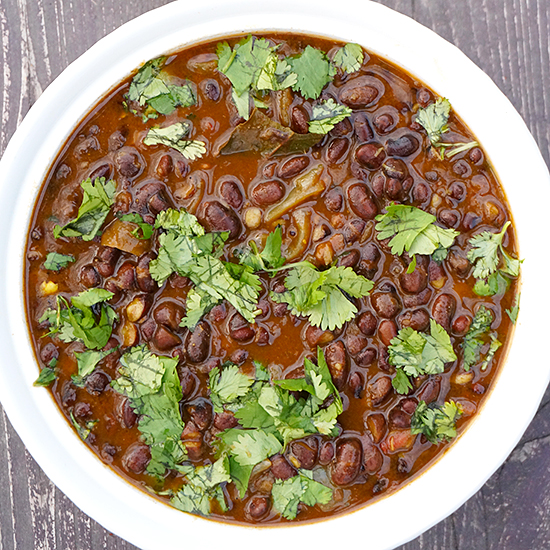
Rajma with Rancho Gordo San Franciscano Beans
Enjoy! And let me know if you liked it enough to want more recipes (perhaps of things to eat alongside these beans).
*Steve and I have been giving each other shit online for more than a decade now. So much so that some sweet folks think we actually dislike each other (which pleases me so very much). It hurts me to break character here but the truth is he’s sort of a protege. With the exception of the areas of music and fashion I’ve taught him everything he knows (not everything I know, but everything he knows).

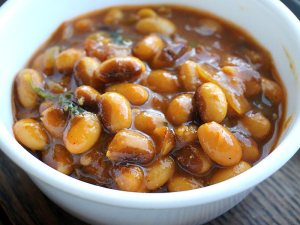
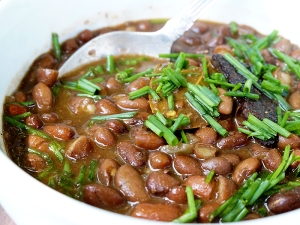
I’m a fan, please continue with this approach. I have a hard time with single malts after a spicy meal, most of the time I can barely taste anything. Any suggestions?
LikeLiked by 1 person
For me it’s not spice per se that’s the problem but strong, cloying flavours that take over the palate—onions and garlic but also cilantro; likewise, I can’t taste whisky properly after eating pesto (so it’s not just Indian or spicy food). My own remedy is to wait a bit and eat some very dark chocolate to clear out my palate.
LikeLike
Chocolate seems to cure everything. Thanks for the tip.
LikeLiked by 1 person
Pizza always seems to screw up my palate for drinking whiskey neat. It seems almost like it strips my mouth of whatever protective layer is in there so the whiskey is like fire. I just avoid it if I’m going to be tasting afterwards because I’ve found once it’s happened, there’s nothing I can do. And no, it’s not from eating the pizza when it’s too hot. :)
LikeLiked by 1 person
Thanks for this. I appreciate the Rancho Gordo recommendation, too.
LikeLiked by 1 person
Huge thanks for posting your bean and dal recipes. It is always encouraging to get new recipes to try. Here in the UK we can’t get Rancho Gordo beans but we do have a new company called Hodmedods who do a selection of local dried beans that have a rapid turnover.
I used dried Fava beans in my version of your rajma and I have to say they came out really well. They cook with a really dark pot liquor and come out a lovely deep brown. I could not get Amchur at my local spice seller so we subbed a little lemon juice but I had everything else.
A lovely recipe that will become a favourite. Thanks.
LikeLiked by 1 person
Great to hear. Alas, I don’t think Rancho Gordo has any plans for international expansion.
LikeLike
We stopped at Pooja Grocers on Central Ave. and picked up our (Swad) kidney beans for this Rajma, along with a few other items (thai green chilis, as I’d been admonished not to use serrano). They’ve expanded into the old “indian fast food” place next door, so they’ve got lots of room for product now.
(A very nice and new Mexican grocer and butcher is also in that mall, just opened btw).
Forgive me for cross checking with Neeta Saluja’s “Six Spices”: I blenderized the onions with the garlic and ginger for the paste (I don’t think I like this method, I will do the onions separate next time). I was able to use most all of your spices for the tadka . She adds some yogurt, and at the end, ghee. Instead of that, I went the Punjab way, and mixed some cream in at the end that I needed to use up. (I was tempted to add a pat of ice cold butter on top, in spite of you).
I’d never made this dish, but we are glad we did. It was delicious and we were able to match your picture of the dish. The 1/2 t. of chili powder was plenty hot, so I left out the thai chili at the end. Thanks for the recipe.
LikeLiked by 1 person
Great to hear. Yes, if you grind onions to a paste you need to be sure to saute the paste well to get the raw onion flavour out—not always easy to do this without also scorching it—and it might still get bitter.
LikeLike
Hi, we made this again, is Cathy’s favorite now. Beans took hours to cook, I really should get a pressure cooker I guess. But the end result was awesome.
We also did a kofta, paneer and cabbage, since that’s what we needed to use up, off YouTube. It was ok. The cabbage was red type and uncooked, so I wasn’t pleased with the chew, they were a little dense. Do you have a kofta recipe that’s cheese forward?
LikeLike
Made this over the weekend using Hidatsa Reds. You haven’t let me down yet!
LikeLike
Very glad to hear it!
LikeLike
Found your website from a Rancho Gordo post and made this last night. I have stayed away from cooking Indian food because it seems so intimidating, however, this was not only delicious, it came together easily. I’m really excited to try so many of your other recipes!
LikeLike
So glad you enjoyed it. Let me know what else you try (but only if you like the results).
LikeLike